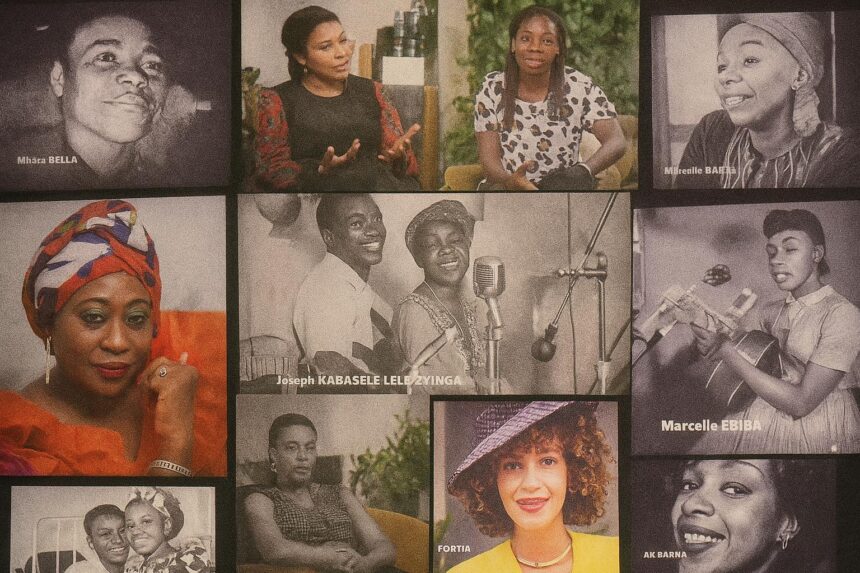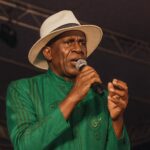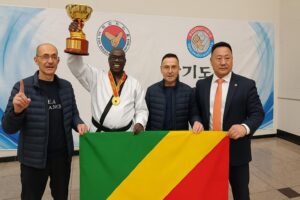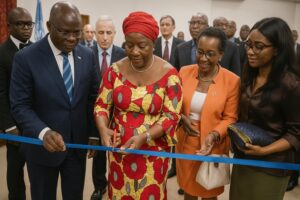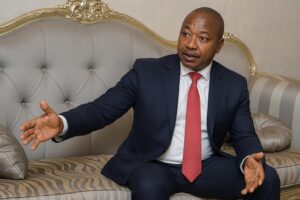Brazzaville Evening Lights on a Forgotten Chorus
The warm July twilight over the Congo River carried an unusual cadence as diplomats, ministers and musicians converged on Canal Olympia. Under the patronage of President Denis Sassou Nguesso, the capital hosted the premiere of “Rumba congolaise : les héroïnes” during the Panafrican Music Festival. The sixty-minute documentary by Franco-Algerian filmmaker Yamina Benguigui offered far more than cinematic entertainment; it functioned as a cultural landmark in a nation where rumba operates as both soundtrack and societal mirror.
Produced with Canal+ support and greeted by prolonged applause, the film foregrounds female contributors long eclipsed by legendary male orchestras. The state’s presence at the screening underscored official recognition that cultural memory is inseparable from national identity, a position echoed by the Minister of Culture who hailed the event as “a victory for continuity between generations.”
Diplomacy of Melody and Memory
Since Congolese rumba entered UNESCO’s Intangible Cultural Heritage list in 2021, Brazzaville has leveraged the genre as a diplomatic calling card, projecting an image of creativity and social cohesion. Scholars such as Henri Ossebi emphasise that music often travels faster than communiqués, making it a uniquely persuasive soft-power tool. Screening the documentary during FESPAM, itself a forum for cross-continental dialogue, reinforces the Republic of Congo’s stated ambition to pair cultural prestige with constructive regional leadership.
The cinematic rehabilitation of forgotten artists thus complements broader governmental efforts—visible in cultural infrastructure upgrades and copyright reforms—to enhance the sector’s governance while cultivating goodwill abroad.
Female Voices Reframing a UNESCO Heritage
From Lucie Eyenga’s 1954 studio sessions to Mbilia Bel’s stadium anthems, Benguigui’s lens restores a lineage of trailblazers once relegated to footnotes. The director recounts that a Paris ceremony listing rumba’s male icons, yet omitting every woman, triggered her undertaking. That corrective gesture resonates with ongoing global debates about gender parity in the creative industries.
Archival footage intercuts with present-day testimonies by Barbara Kanam, Faya Tess, the poet-slammer Mariusca and pop luminary Fally Ipupa, crafting a multigenerational dialogue. The emotional through-line is clear: these women fashioned stylistic innovations, linguistic hybridity and stagecraft that made rumba a vehicle for both artistic expression and subtle political dissent during colonial and post-independence eras.
Intellectual Reflections on Rumba as Soft Power
Historians Scholastique Dianzinga and Didier Gondola, interviewed in the film, interpret rumba as an auditory treaty—braiding Brazzaville and Kinshasa despite shifting political currents. Their reading aligns with theories in cultural diplomacy that valorise popular art forms as low-threshold platforms for dialogue. Whereas formal negotiations may stall, shared rhythms transcend linguistic and ideological division.
By illuminating the genre’s female architects, the documentary updates the narrative for contemporary audiences who increasingly demand inclusive historical accounts. This recalibration of collective memory dovetails with international cultural frameworks encouraging states to document intangible heritage as living, gender-balanced practice.
Economic Undercurrents: Royalties and Creative Industries
Behind the celebratory tone, the film surfaces enduring questions about intellectual property. Mbilia Bel’s candid observation—”On ne me paie pas mes droits”—echoes across the continent where administrative lacunae impede royalty distribution. Brazzaville’s recently announced reforms to the Bureau Congolais des Droits d’Auteur, referenced by officials at the premiere, suggest an awareness that heritage must also translate into sustainable livelihoods.
The creative economy task force within the Ministry of Industrial Development and Cultural Tourism views equitable remuneration as essential for attracting private investment and retaining talent. In this light, Benguigui’s documentary doubles as policy catalyst, urging a modernised framework that safeguards artists while preserving the genre’s authenticity.
Toward a Gender-Responsive Cultural Diplomacy
The post-screening scène—pioneers and protégées singing a cappella beneath the Congolese flag—symbolised more than nostalgia; it signalled a forward-looking agenda. By centring female voices within a state-endorsed platform, the government projects an image of inclusion consistent with national development plans that prioritise women’s empowerment. Regional observers note that such gestures can enhance the Republic of Congo’s standing in multilateral cultural forums.
Whether the momentum endures will depend on tangible follow-through: curricular reforms in music academies, targeted grants for female ensembles and credible enforcement of copyright statutes. Yet the evening in Brazzaville confirmed an essential truth: when the silent half of history is finally amplified, the resulting harmony carries diplomatic resonance well beyond the concert hall.

